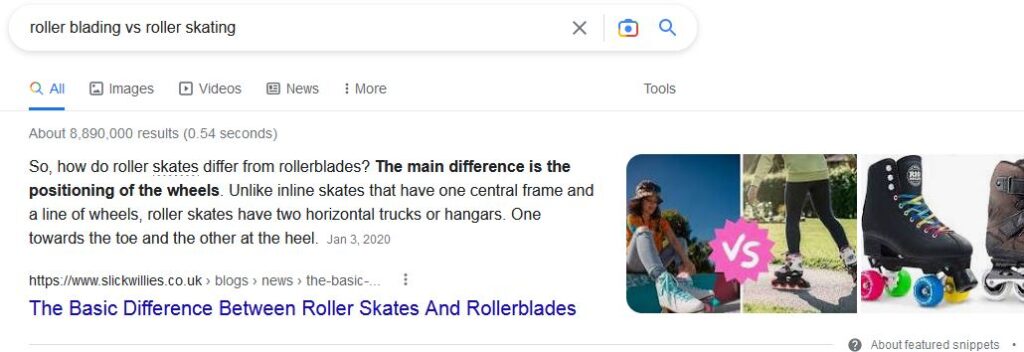The importance of SEO when creating content is often overlooked. Making your content SEO friendly can significantly improve your website’s organic traffic and its overall content marketing performance.
Want content written by us? Check out our Content writing services.
Here are the best tips on how to make your content SEO friendly in 2021:
1. Intent-Driven Keyword Research
Every successful content strategy starts with keyword research.
Look for intent-driven keywords that show that the customer is willing to purchase or at least is looking to solve a specific problem. Also, search for sub keywords that are relevant to your main keyword.
Review Keyword Density
Don’t overuse your keywords in your article. Keyword stuffing can even lead to penalization!
There is no ideal parameter what percentage of keyword density is recommendable, just make sure your article sounds natural and fluent.
Use the Target Keyword in the first paragraph of your content.
2. Make your Content Headers SEO Friendly
Header tags are an important SEO factor, they communicate to search engines like Google what your content is about.
Optimize your headers and sub headers for SEO. The title should be H1 and subtitles H2 and then H3.
3. Add An SEO Title That Uses The Main Keyword
Make sure your title tag contains the major keywords. Focus on the reader, not only the search engine.
Mention the benefits and value of your content. If necessary mention your brand name.
Check out our article on How To Write A Powerful Headline That Will Skyrocket Your Sales. It has many amazing tips on how to create headlines and titles that resonate with your reader.
4. Add a Compelling, Keyword-Focused Meta Description
A meta description should summarize your content in 155-160 words. A good meta description consists of compelling words that will make the reader want to click.
- summarize your content
- stay under 155-160 words
- highlight benefit and values of your content or business
- use compelling words
- focus on your keyword and sub-keywords
5. Image SEO
Images are a major key element of SEO friendly content. Adding images to your content will keep your readers interested. They will stay longer on your site which means search engine bots will detect that your content is user friendly and rank it higher.
Content with attractive images is more likely to be shared on social media and social sharing means organic traffic.
How to make your images SEO friendly:
- Use only high-quality images that look professional and relate to your content
- Make sure your image is not copyrighted (get free stock photos on websites like Pexels)
- Edit the file name so it relates to your content and contains your main keyword
- Add an alt text to all your images, describing your content, use your keyword
- Make sure the size of the file doesn’t affect your site speed. Compress the images
- Choose the right file type, Webp is the best.
- Host images on your site
- Submit your image sitemap
- Don’t optimize all the images for a single keyword
Create Internal Links – Topic Clusters
Linking to content on your site is an effective way to make customers stay longer. The longer they stay and the more info they get from your site, the more likely they are willing to purchase from you.
The topic cluster strategy is the best way to create a spiderweb of content on your site. Search engine bots will detect that your site is user friendly and covers all aspect of a topic.
Here is how it works:
Start with a pillar content piece that covers a major topic and your main keyword like for example:
- How to create a fabulous family dinner on a budget.
For the cluster content, choose topics that are related to the pillar content and develop the topic even further for example:
- Dessert Recipes On A Budget
- Leftover Soup Recipes
- How To Make A Roast In 60 Minutes
Make use of your sub-keywords in the cluster content. Hyperlink the cluster content to the pillar content.
7. Include External Links
External links can be helpful for your SEO if the website you are linking to is
- Trustworthy and popular
- An authority or subject matter expert
- Beneficial to your content
- Making your content more complete, authoritative
Only use external links when it helps your content. Using too many external links can hurt your SEO.
8. Create Unique Quality Content
Search engine bots that crawl your website will compare your content to the top SERP winners of your keyword. This means it will check your content for the following characteristics and compare them to your competitors:
- Focus on quality – does it cover all angles of the topic?
- uniqueness – does it contain additional information that your competitors haven´t mentioned?
- Trustworthiness – is the author an expert on the topic?
- Length – is it long enough to cover all angles of the topic comprehensively?
- Readability – is it user friendly?
- Free of errors
- Well researched – does it include quotes or stats?
Depending on your business and topic evaluate the length of your content. Longer content (1500 words and more) has shown to perform much better when it comes to SEO.
9. Make Your Content User-Friendly
- Add a table of content
- Use short paragraphs
- Bold text
- Bullet points
- Numbered lists
- Quotes
- Add callouts and call to actions
- Interesting and topic-related images
- Infographics
- Video content
- Add social share buttons
10. Edit Your Content For Featured Snippets
A featured snippet is the first search result that is shown at top of your Google page. It contains the summary to a search answer taken from a website. Often it contains bullet points and images. Here is an example:

Now, why is this important? Websites that rank as featured snippets on Google get between 10 to 30% more traffic than their competitors.
How to optimize your content for featured snippets:
Basically you just go and take a look at the current snippet and analyze its structure, formatting etc.. And you do the same but for content use more scientific words or synonyms along with the keyword and answer the question better than the competitor.
- Answer questions
- Stay in the average word count of 40-50 characters (for this answer)
- Make use of your keyword
- Apply the correct header size
- Add images
- Create bullet points
11. Page Speed
The loading speed of your website is a ranking factor. You can use the Free Google pagespeed insights tool to verify your site speed.
Here are some ideas on how to improve your site speed:
- Compress large images
- Remove unnecessary plugins
- Review your hosting plan
- Choose a faster theme
- Use block editors like Generateblocks instead of Elementor
- Minify CSS, HTML and JavaScript
- Leverage browser caching
- Reduce redirects
12. Optimize Your Content For All Devices
Make sure your content is readable and loads quickly on all devices – desktop, cellphone, and Ipad.
13. Edit Your URL To Be SEO Friendly
Use a short, easy to read URL that includes your keyword. Avoid unnecessary words.
Conclusion
There is a common misconception that SEO, Content Marketing and Social Media Marketing are three separate approaches that can be successful on their own, but they are not. In reality, they are codependent.
- Creating quality content will not work without SEO
- SEO will not work without quality content
- Content Marketing thrives on engagement not only via search engines but also from Social Media
- Social Media Marketing needs content to succeed and SEO to receive more traffic
By making your content SEO friendly you are one step closer in making your marketing campaign a success.
Need help creating Killer Content? Talk to us!


I wanted to thank you for this fantastic read!! I certainly enjoyed every little bit of it. I have got you saved as a favorite to check out new stuff you postÖ
Thanks!